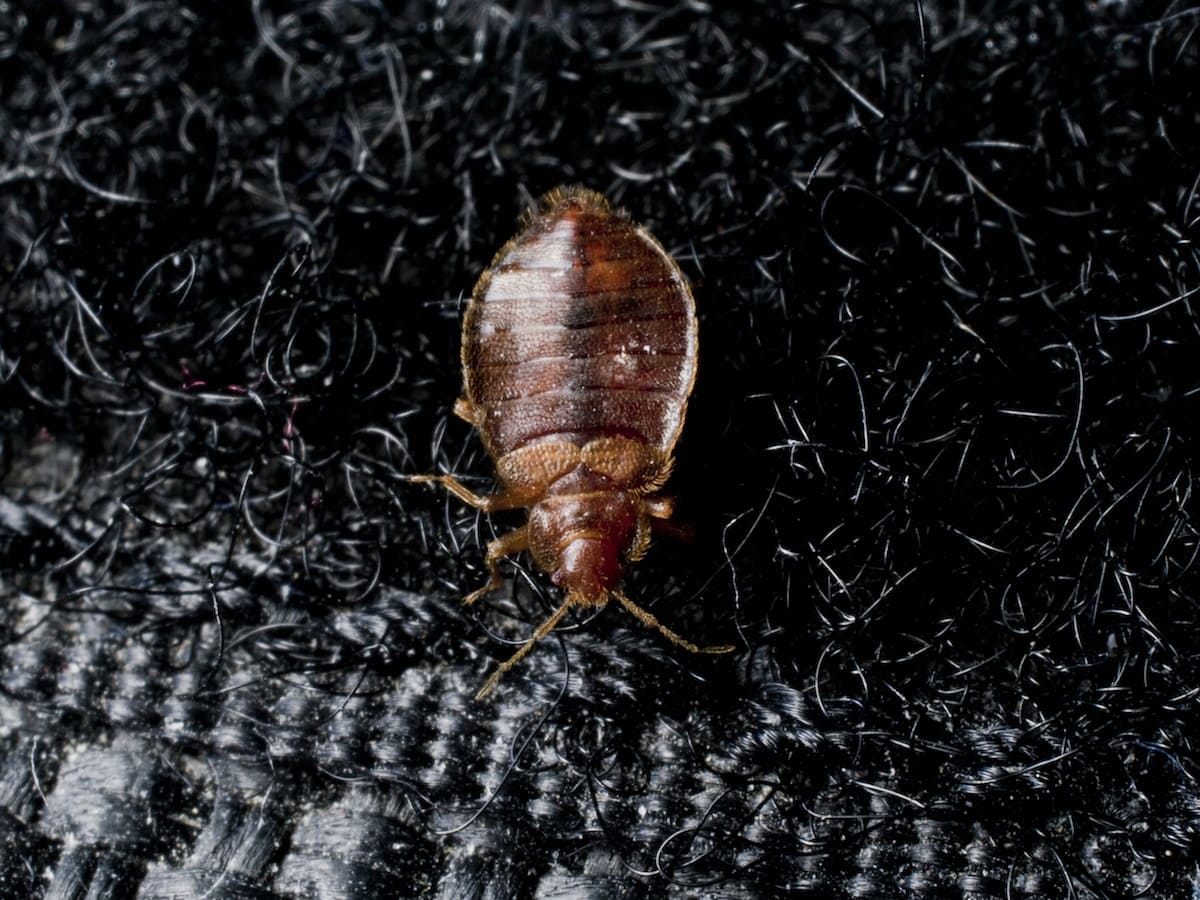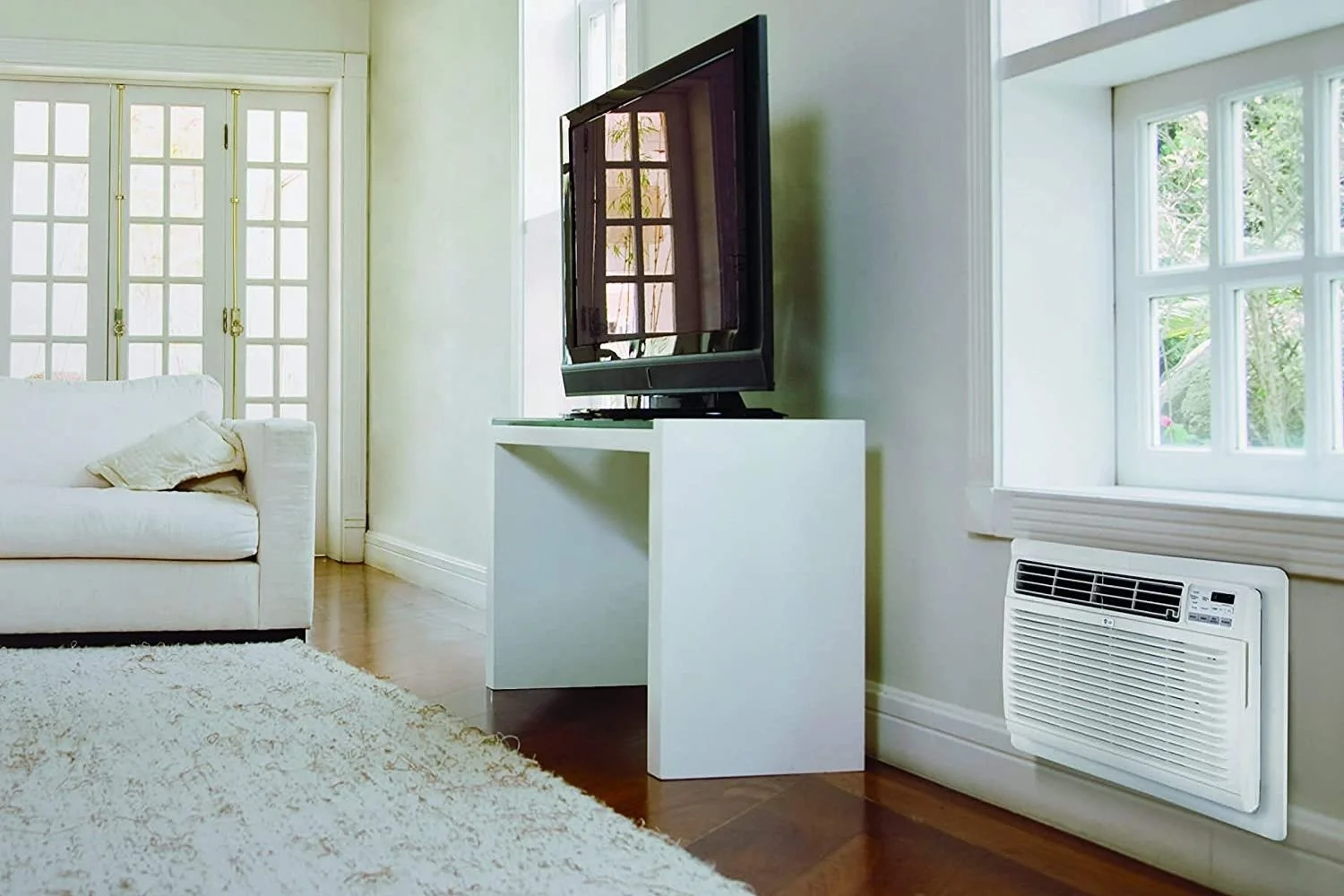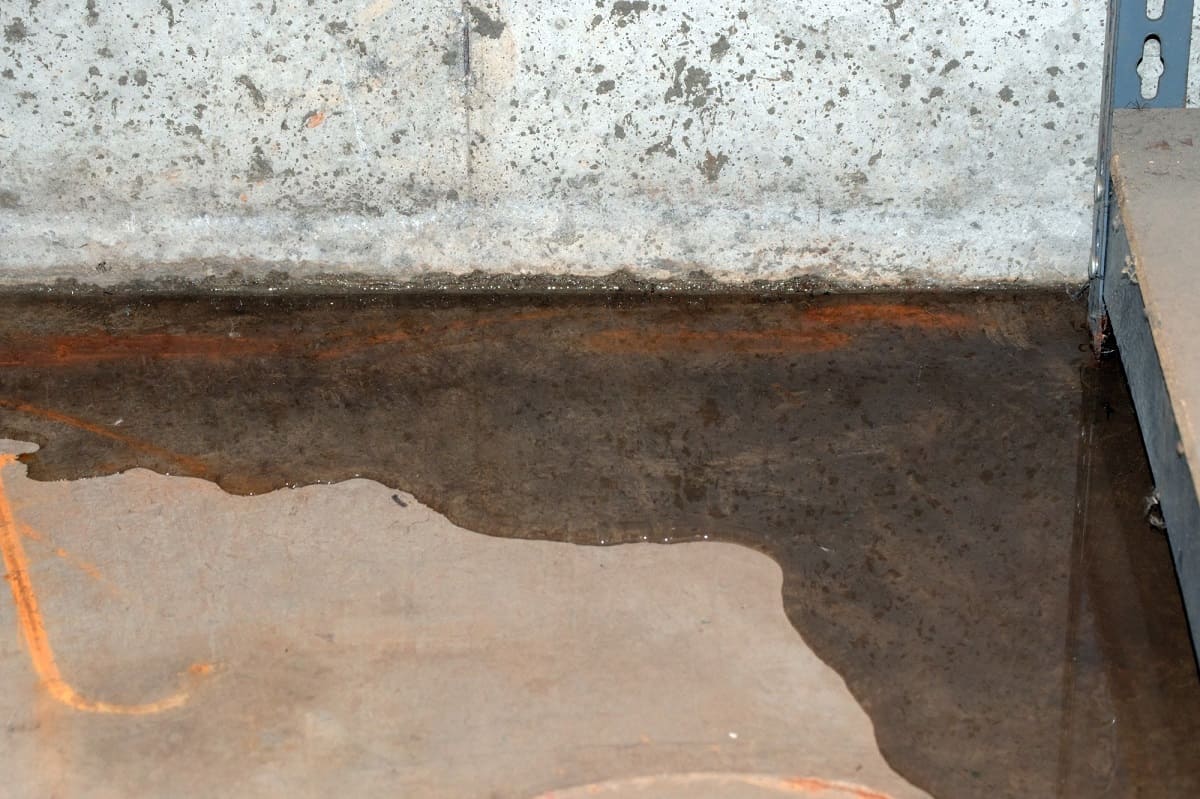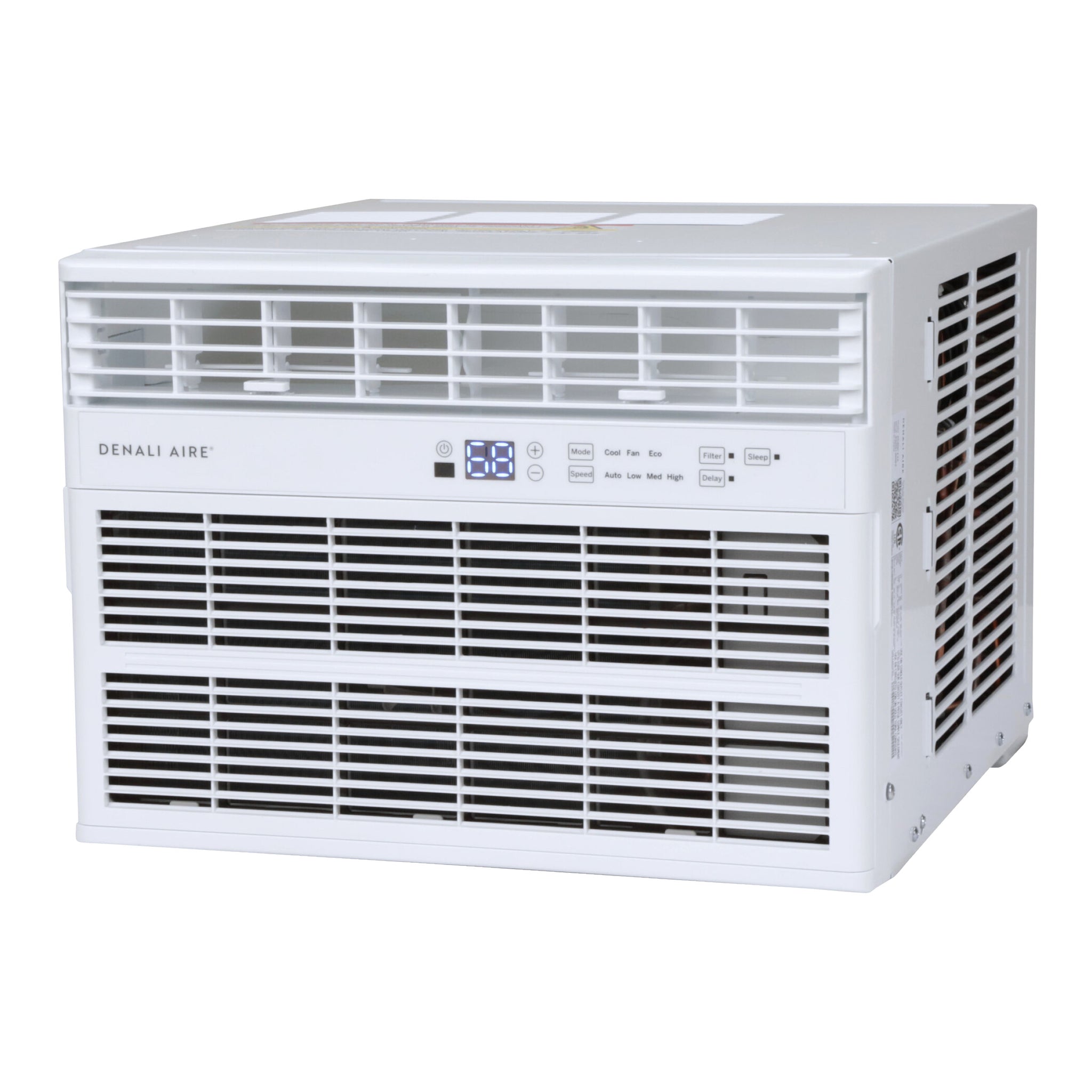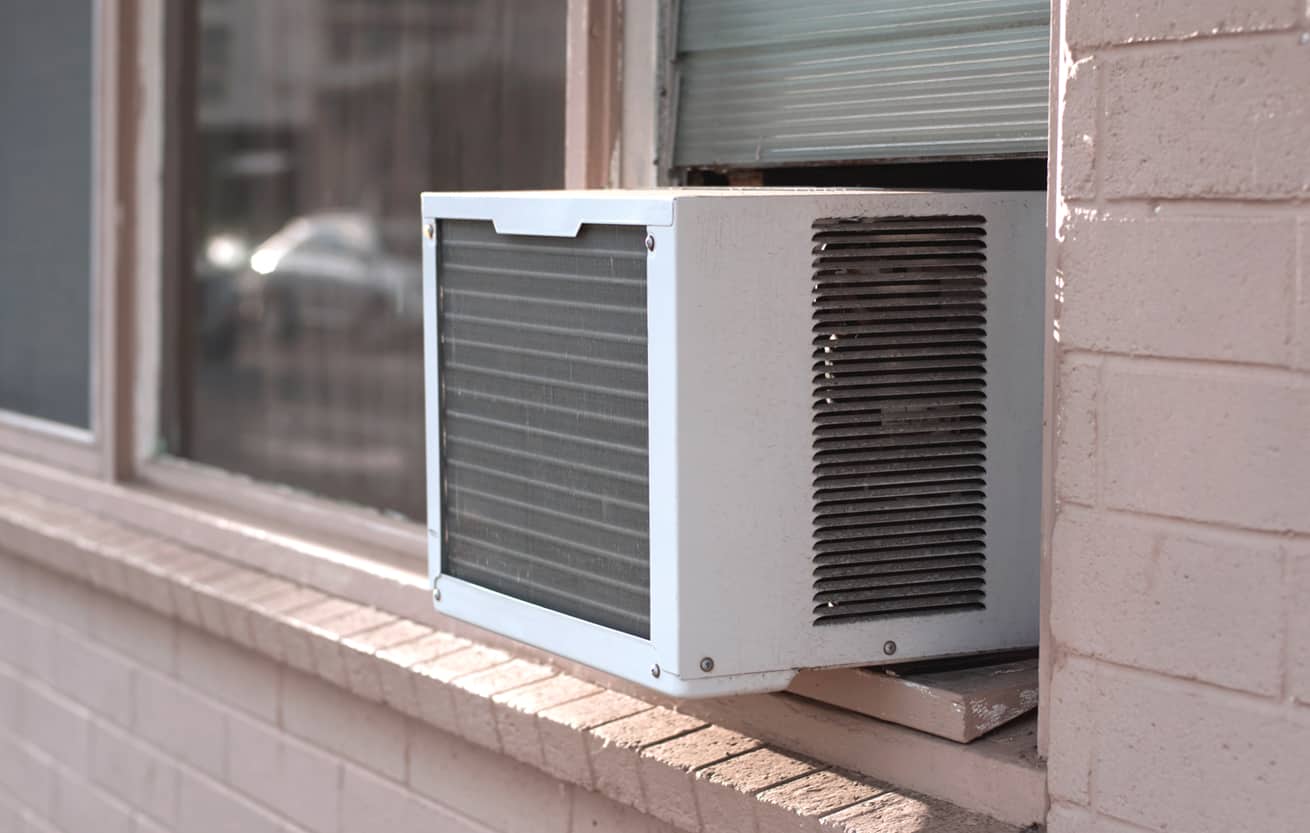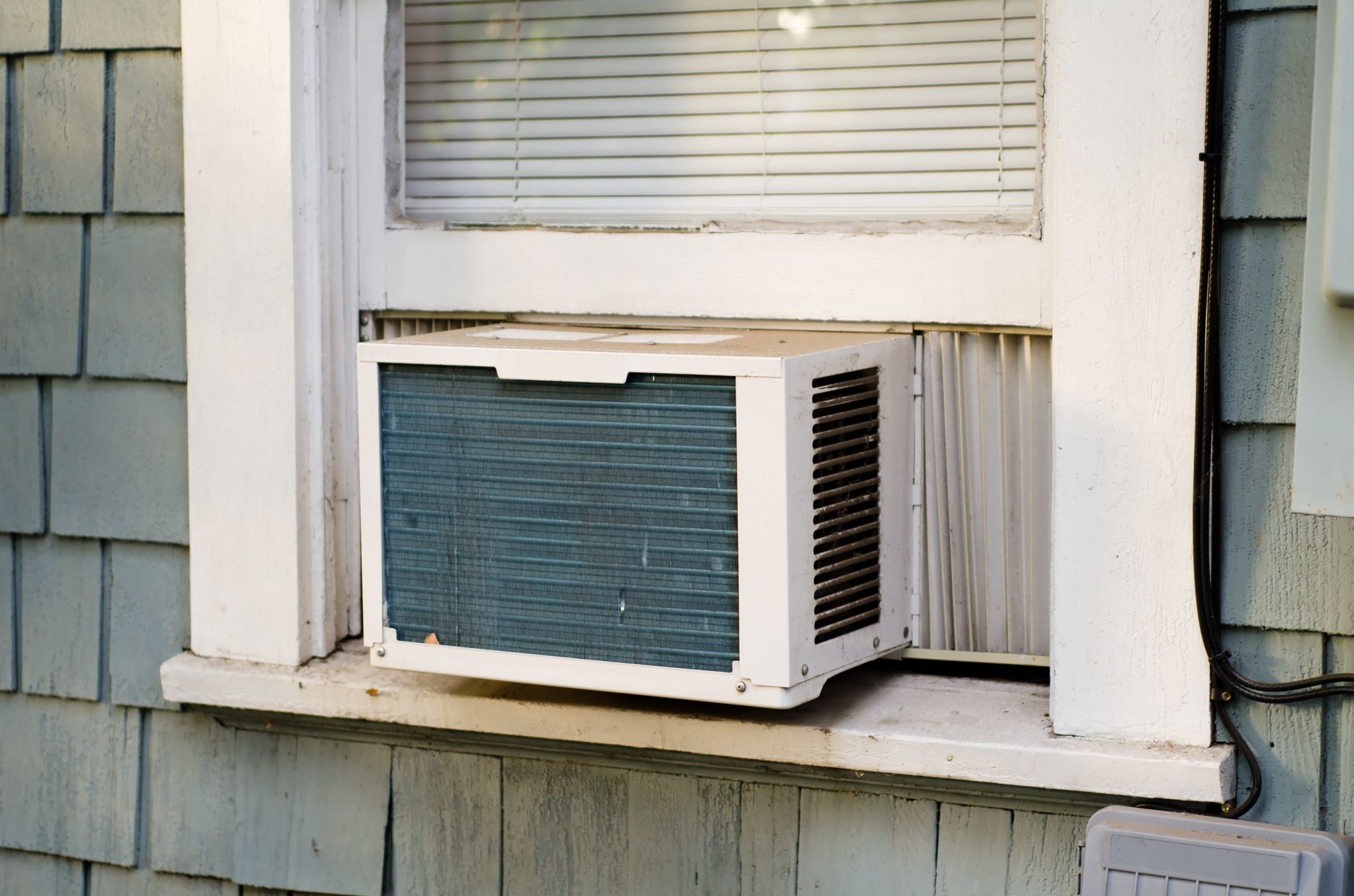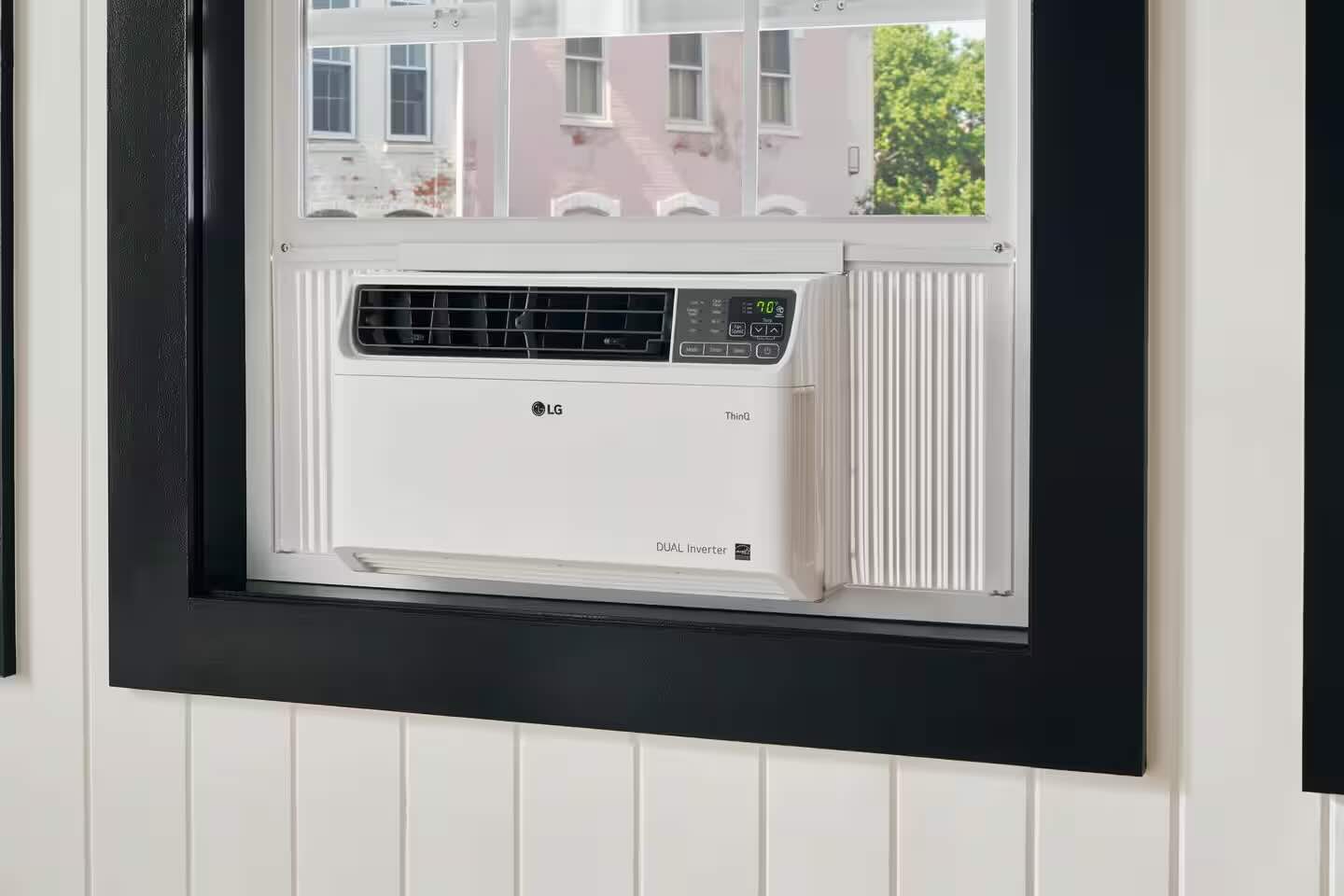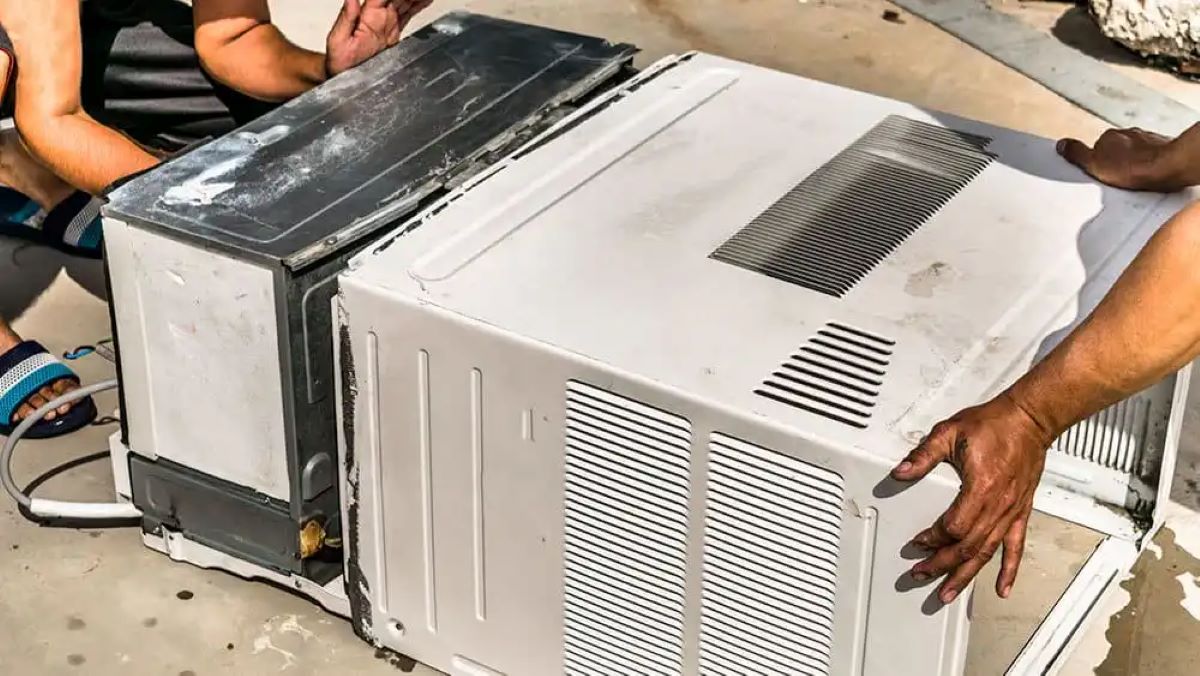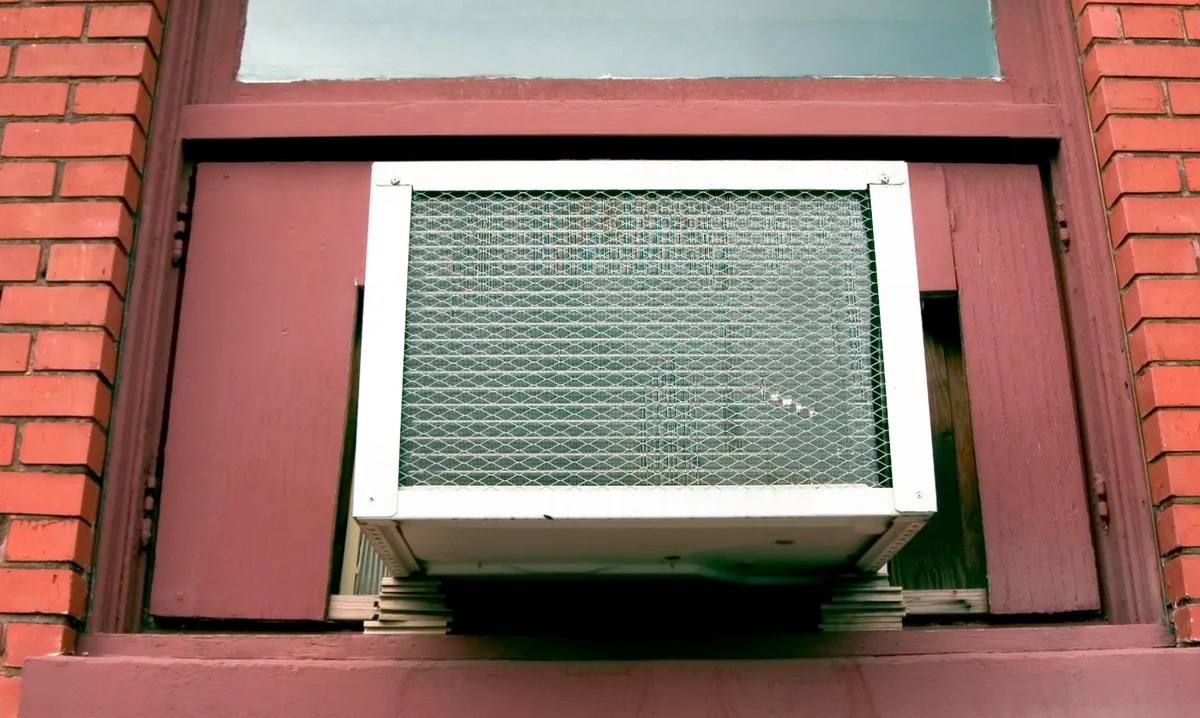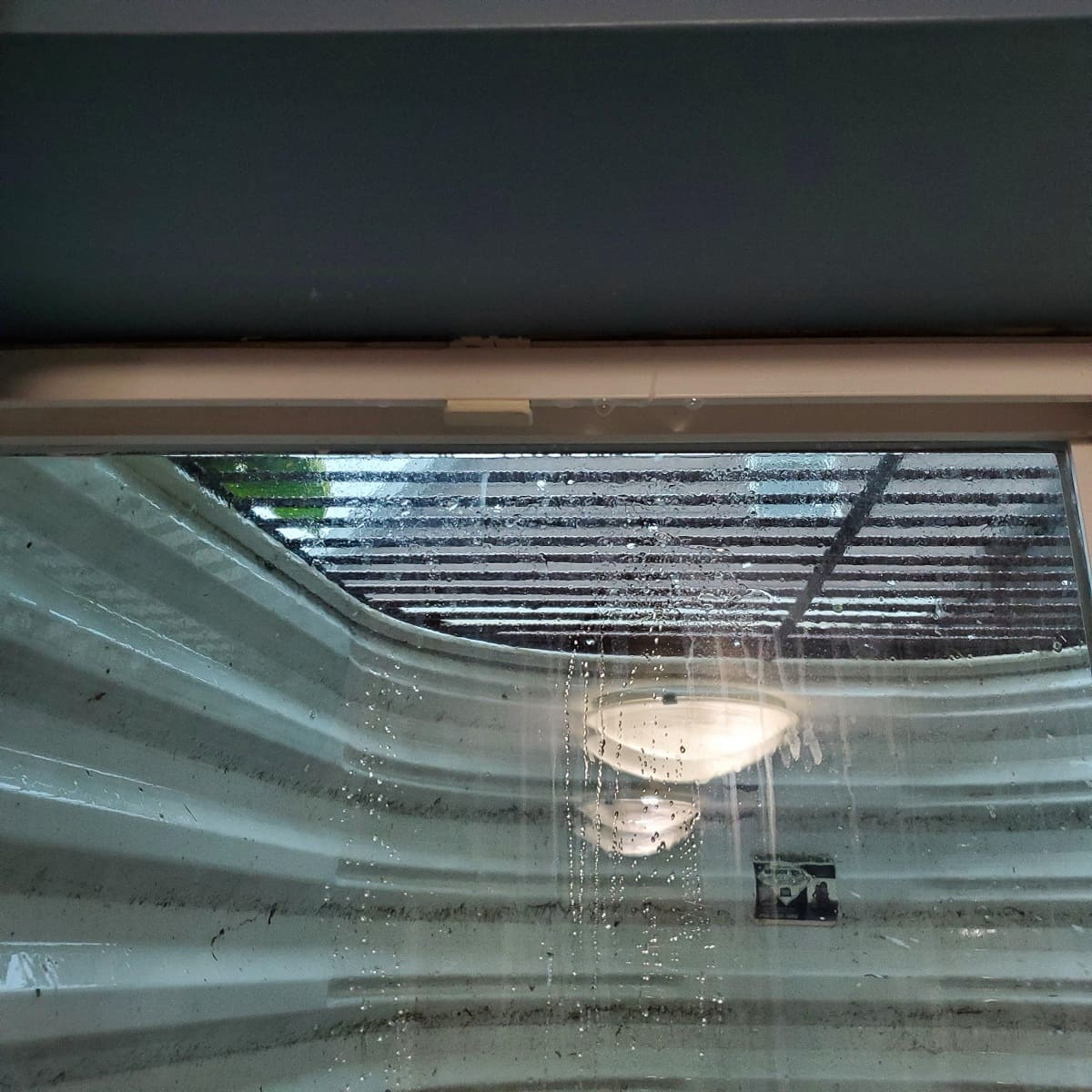Home>Home Maintenance>How To Keep Bugs From Coming Through Window Air Conditioner
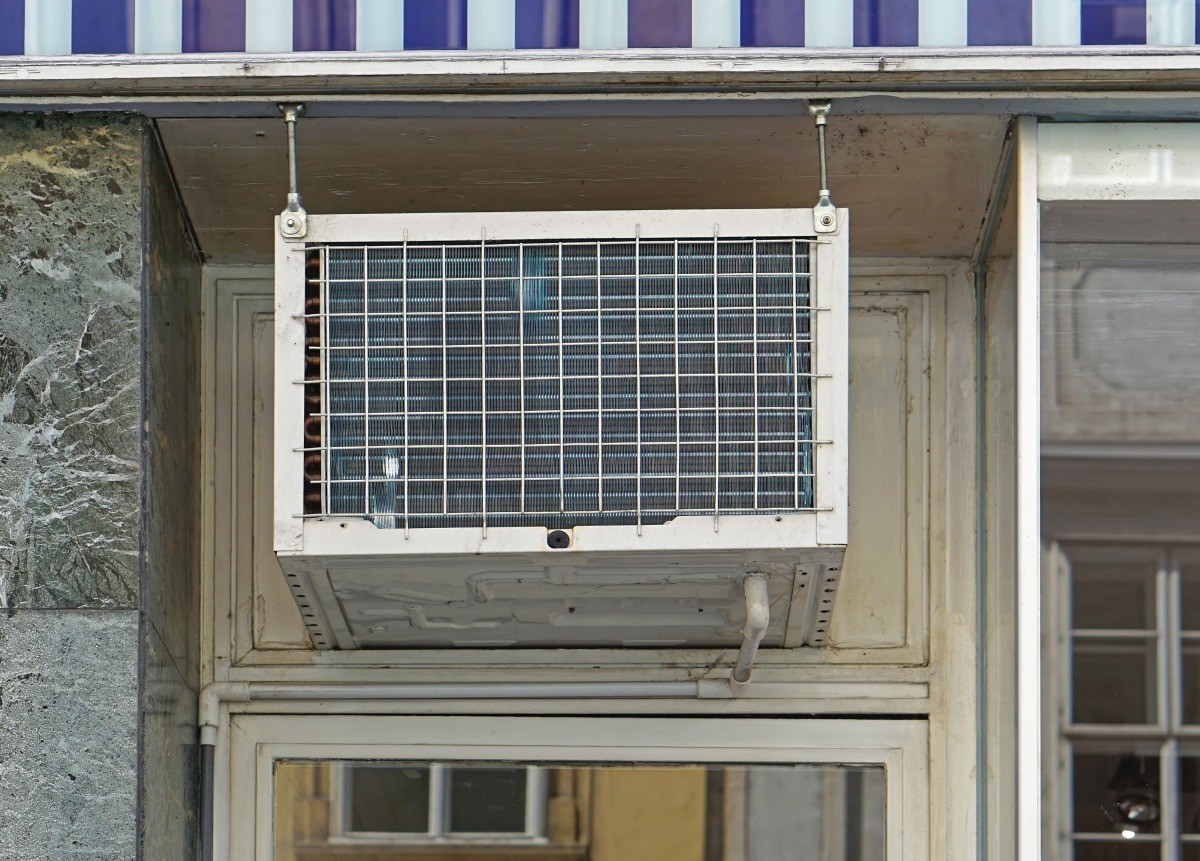

Home Maintenance
How To Keep Bugs From Coming Through Window Air Conditioner
Modified: May 6, 2024
Learn effective home maintenance tips to prevent bugs from entering your space through window air conditioners. Keep your home bug-free and comfortable.
(Many of the links in this article redirect to a specific reviewed product. Your purchase of these products through affiliate links helps to generate commission for Storables.com, at no extra cost. Learn more)
Introduction
Welcome to our comprehensive guide on how to keep bugs from coming through your window air conditioner. As the temperature rises, many of us rely on air conditioners to keep our homes cool and comfortable. However, along with the cool air, window air conditioners can also inadvertently become entry points for unwanted pests such as bugs, flies, and even small rodents.
Dealing with bugs infiltrating your living space can be frustrating and unsanitary. Not only can they create a nuisance by buzzing around and disturbing your peace, but they can also carry diseases and contaminate your surroundings. Fortunately, with a few simple steps, you can minimize the chances of bugs making their way into your home through your window air conditioner.
In this guide, we will walk you through different methods to prevent bugs from entering your home while still enjoying the cool breeze of your air conditioner. From cleaning and sealing your windows to using screens and applying insect repellents, we have you covered. Let’s dive in!
Key Takeaways:
- Keep bugs out by cleaning and sealing your window area. Use weatherstripping and screens to create a barrier against pests, ensuring a comfortable and bug-free home environment.
- Apply insect repellents and maintain regular cleaning and maintenance to deter bugs from entering through your window air conditioner. Stay proactive and enjoy a pest-free living space.
Understanding the Problem
Before diving into the solutions, it’s essential to understand why bugs tend to find their way through window air conditioners. Air conditioners have gaps and openings that can serve as entry points for pests, especially if they are not properly maintained or sealed.
Bugs are attracted to sources of heat, light, moisture, and food. When your air conditioner is running, it emits warm air and bright light, which can easily catch the attention of flying insects like flies and mosquitoes. Additionally, the moisture generated by the condensation process of the air conditioner can attract bugs seeking water sources. Finally, the particles and debris that accumulate in your air conditioner can serve as a potential food source for pests.
Window air conditioners, in particular, can present more opportunities for bugs to enter your home due to the gaps around the unit. These gaps can occur between the unit and the window frame or the window pane itself. Small openings can be an invitation for bugs to crawl through and find their way into your living space.
Now that we understand why bugs are attracted to window air conditioners, let’s explore the various preventive measures you can take to keep them at bay. By implementing these solutions, you can ensure a bug-free and comfortable environment in your home.
Cleaning and Sealing the Window
One of the first steps to prevent bugs from coming through your window air conditioner is to clean and seal the window area surrounding the unit. This helps eliminate any potential entry points and create a barrier that bugs cannot easily penetrate.
Start by thoroughly cleaning the window frame, window sill, and the area around the air conditioner. Remove any accumulated dirt, debris, or dead insects using a vacuum cleaner or a brush. Wipe down the surfaces with a mild soap and water solution to ensure they are clean and free from any food or scented residues that may attract bugs.
Next, inspect the window for any gaps or cracks. Use caulk or weather-resistant sealant to seal any openings around the window frame or between the unit and the window. Pay attention to the corners, edges, and seams where bugs are more likely to find their way in. This step will not only prevent bugs from entering your home but also help improve the energy efficiency of your air conditioner.
For added protection, you can also install weatherstripping around the window. Weatherstripping is a flexible material that acts as a barrier, sealing gaps and preventing drafts. It can be easily applied to the window frame or the moving parts of the air conditioner. Make sure to choose weatherstripping that is suitable for your specific window and air conditioner type.
By cleaning and sealing the window area, you create a solid defense against bugs attempting to enter your home through the gaps around your air conditioner. This proactive measure significantly reduces the likelihood of bugs finding their way into your living space, providing you with a pest-free environment.
Installing Weatherstripping
Another effective method to prevent bugs from entering your home through your window air conditioner is by installing weatherstripping. Weatherstripping creates a tight seal around the edges and moving parts of your air conditioner, minimizing the chances of bugs finding their way in.
Weatherstripping comes in various materials, such as adhesive foam tape, rubber, or silicone. It is important to choose weatherstripping that is suitable for your specific window and air conditioner type. You can find weatherstripping at your local hardware store or online.
Here’s a step-by-step guide on how to install weatherstripping:
- Clean the surfaces: Before applying weatherstripping, ensure that the window frame, window sill, and the area around the air conditioner are clean and free from any dust or debris. Use a mild soap and water solution to wipe down the surfaces and let them dry completely.
- Measure and cut: Measure the length of each side of the window frame and the moving parts of the air conditioner. Cut the weatherstripping material to the appropriate length, allowing for a snug fit when the window is closed.
- Apply adhesive: Peel off the backing of the adhesive side of the weatherstripping and apply it to the edges of the window frame or the moving parts of the air conditioner. Press down firmly to ensure a secure attachment.
- Press and seal: Close the window and press firmly to ensure the weatherstripping adheres properly. Check for any gaps or areas that may require additional weatherstripping and make adjustments as needed.
Installing weatherstripping provides an extra layer of protection against bugs by sealing off any gaps or openings around your window air conditioner. It creates a tight and secure barrier that prevents bugs from entering your home while still allowing fresh air to flow through.
Remember to inspect and replace weatherstripping regularly to maintain its effectiveness. Over time, weatherstripping may wear out or become damaged, compromising its ability to keep bugs out. By keeping the weatherstripping in good condition, you can ensure long-lasting bug protection for your home.
To keep bugs from coming through a window air conditioner, use a fine mesh screen or install a foam seal around the unit to block any gaps. Regularly clean the filter to prevent bugs from entering.
Using Screens or Mesh Covers
One of the simplest and most effective ways to keep bugs from coming through your window air conditioner is by using screens or mesh covers. These barriers act as a physical shield, preventing bugs from entering your home while still allowing fresh air to flow through.
Here’s how you can utilize screens or mesh covers to keep bugs at bay:
- Measure your window: Start by measuring the dimensions of your window to ensure you purchase the correct size of the screen or mesh cover. You can find screens or mesh covers in various sizes at your local hardware store or online.
- Install the screen: Follow the manufacturer’s instructions to securely install the screen or mesh cover over your window. Make sure it fits tightly and covers the entire window opening. Some screens may require the use of screws or clips to secure them in place.
- Maintain the screen: Regularly inspect the screen or mesh cover for any tears, holes, or damage. If you notice any issues, promptly repair or replace the screen to maintain its effectiveness in keeping bugs out.
Screens or mesh covers not only prevent bugs from entering your home but also offer other benefits. They can help filter out dust and pollen, improve air circulation, and provide added privacy. Additionally, screens and mesh covers can be easily removed for cleaning or during the winter months when you’re not using the air conditioner, making maintenance hassle-free.
If you prefer a more permanent solution, you can also consider installing a window screen frame. These frames are designed to fit perfectly within your window frame and can be easily removed or adjusted as needed. Window screen frames provide a sturdy and durable barrier against bugs, ensuring a bug-free environment in your home.
By using screens or mesh covers, you can enjoy the cool breeze of your window air conditioner while keeping bugs out. It’s an effective and convenient solution to maintain a comfortable and pest-free living space.
Applying Insect Repellents
In addition to the preventive measures mentioned above, another approach to keeping bugs from coming through your window air conditioner is by applying insect repellents. These repellents create a barrier that helps deter bugs from approaching and entering the area around your air conditioner.
Here are some options for applying insect repellents:
- Spray repellents: Look for insect repellent sprays that are specifically designed to repel flying and crawling bugs. Before using any repellent, carefully read and follow the instructions on the label. Apply the spray around the perimeter of your air conditioner, focusing on the gaps and openings where bugs are most likely to enter. Reapply the repellent according to the manufacturer’s recommendations.
- Essential oils: Certain essential oils have natural insect-repelling properties. You can create a DIY repellent spray by diluting a few drops of essential oil, such as peppermint, citronella, or eucalyptus oil, in water. Spray this mixture around the window and air conditioner, paying attention to the gaps and openings. Refresh the spray as needed. Keep in mind that essential oils may stain surfaces, so test a small area before applying to the entire window area.
- Commercial repellent devices: There are various commercial devices available that emit ultrasonic or electromagnetic waves to repel bugs. These devices claim to create an environment that bugs find uncomfortable, effectively deterring them from entering your living space. Follow the manufacturer’s instructions for proper installation and use.
Using insect repellents alongside other preventive measures adds an extra layer of protection against bugs. However, it is important to note that repellents are not 100% foolproof and may not completely eliminate all pests. Regular maintenance and inspections are still crucial to ensure the effectiveness of your bug prevention efforts.
Remember to consider any potential allergies or sensitivities to certain repellents, especially if you have pets or small children in your home. Always use repellents in a well-ventilated area and keep them out of reach of children.
By applying insect repellents, you can create a deterrent zone around your window air conditioner, reducing the risk of bugs entering your home and disrupting your comfort.
Regular Maintenance and Cleaning
To ensure the long-term effectiveness of your bug prevention efforts, it is important to incorporate regular maintenance and cleaning into your routine. By keeping your window air conditioner well-maintained, you can minimize the chances of bugs finding their way through and into your home.
Here are some maintenance and cleaning tips to follow:
- Inspect the unit: Regularly inspect your window air conditioner for any signs of damage, such as cracks, gaps, or loose components. Promptly address any issues as they arise to prevent bugs from exploiting these vulnerabilities.
- Clean the unit: Clean your air conditioner regularly to remove debris, dust, and other potential food sources for bugs. Follow the manufacturer’s instructions on how to safely clean the unit. Typically, this involves removing the front grille, accessing the filter, and gently vacuuming or washing it with water and mild soap. Allow the unit to dry thoroughly before reassembling.
- Replace or clean the filter: The filter in your air conditioner helps trap dust, debris, and other particles. Over time, the filter can become clogged, reducing the unit’s efficiency and potentially attracting bugs. Check the filter regularly and either clean or replace it as recommended by the manufacturer.
- Keep the surrounding area clean: Bugs are attracted to food crumbs, spills, and other sources of nourishment. Regularly clean the area around your air conditioner, including the windowsill and surrounding surfaces. Wipe up any spills and remove food scraps promptly.
- Seal gaps and cracks: Periodically check for any new gaps or cracks that may have developed around your air conditioner or window. Seal them using caulk or weather-resistant sealant to prevent bugs from finding entry points.
By consistently maintaining and cleaning your window air conditioner, you create an environment that is less attractive to bugs. Regular inspections and upkeep allow you to address any potential issues proactively, reducing the likelihood of pests infiltrating your home.
Additionally, a well-maintained air conditioner operates more efficiently, saving energy and prolonging the lifespan of the unit. It’s a win-win situation for both bug prevention and the overall performance of your air conditioner.
Conclusion
Keeping bugs from coming through your window air conditioner is essential for maintaining a comfortable, pest-free living environment. The methods discussed in this guide provide effective ways to prevent bugs from infiltrating your home while still enjoying the benefits of your air conditioner.
From cleaning and sealing the window to installing weatherstripping, using screens or mesh covers, applying insect repellents, and regular maintenance and cleaning, there are several steps you can take to minimize the chances of bugs finding their way in.
Remember, bugs are attracted to heat, light, moisture, and food sources, which can be associated with your air conditioner. By understanding the problem and implementing these preventive measures, you can create a barrier that deters bugs from entering your living space.
Consistency is key. Regularly inspect and maintain your air conditioner, pay attention to gaps and openings, and keep the surrounding area clean. By staying proactive and addressing any issues promptly, you can ensure a bug-free and comfortable environment within your home.
It’s important to note that while these preventive measures are effective, they may not guarantee complete elimination of bugs. In some cases, professional pest control services may be necessary if you’re dealing with a severe infestation or particular pest species.
Overall, by following the steps outlined in this guide, you can significantly reduce the likelihood of bugs coming through your window air conditioner, creating a peaceful and bug-free living space for you and your family. Stay proactive, be diligent with maintenance, and enjoy the cool breeze of your air conditioner without the hassle of unwanted pests.
Now that you've learned how to keep bugs at bay with your window air conditioner, why not tackle other nuisances around your home? For instance, dealing with pesky pantry moths can be frustrating, but our pest control guide provides practical steps to get rid of them for good. Curious about the mechanics and benefits of different cooling units? Our detailed overview on air conditioning units offers insights that could help you make informed decisions. Additionally, maintaining a home requires diligence; discover essential tips to keep your living space in top shape all year round.
Frequently Asked Questions about How To Keep Bugs From Coming Through Window Air Conditioner
Was this page helpful?
At Storables.com, we guarantee accurate and reliable information. Our content, validated by Expert Board Contributors, is crafted following stringent Editorial Policies. We're committed to providing you with well-researched, expert-backed insights for all your informational needs.
